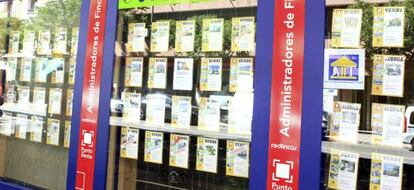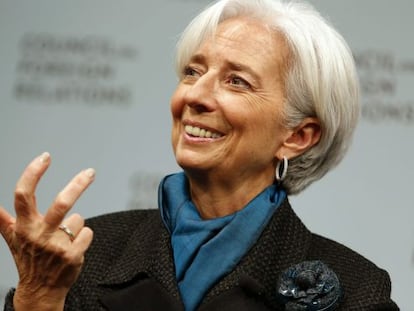ECB will buy 10% of Spain’s public debt
Asset-purchase program likely to help homeowners, tourism and exports


The European Central Bank (ECB)’s plans to inject liquidity into the euro zone includes the purchase of around €100 billion of Spanish government bonds between now and September 2016.
In the end, 10% of Spain’s public debt – which stands at over one trillion euros – will be in the hands of the ECB.
Spanish government bond yields fell to 1.4% on Thursday following the news. The 10-year bond yield had already dropped from 2% to 1.5% in the fall, when rumors about the ECB’s upcoming move began to circulate. By comparison, in the summer of 2012 investors were asking for 7.5% interest on maturity.
The asset-buying program will also help homeowners with their mortgage payments with the Euribor rate expected to drop further from this week’s 0.28% as a result of lenders’ increased liquidity. With a home ownership rate of nearly 80% and close to 90% of mortgages set at variable rates that depend on the Euribor, Spain stands to gain more than any other eurozone country from this reduction.

ECB President Mario Draghi’s announcement also had an effect on exchange rates, with the euro depreciating against the dollar to $1.14 compared with $1.40 in the summer. The lower rate benefits both tourism, Spain’s great engine of economic growth, and exports, another lifesaver during the protracted crisis. Tourism represents 12% of all jobs in Spain.
Ultimately, the ECB hopes that by flooding the markets with money, banks will channel the liquidity to the real economy through increased lending to businesses and households, leading to greater economic activity and more jobs.
The Spanish property crash of 2008 led to a credit crunch when banks, which had been overexposed to real estate risk, began crumbling under the weight of bad loans while borrowing costs in the money markets soared. The lack of lending has been partly blamed for the sluggish economy, which is just now emerging from a seven-year slump.
Tu suscripción se está usando en otro dispositivo
¿Quieres añadir otro usuario a tu suscripción?
Si continúas leyendo en este dispositivo, no se podrá leer en el otro.
FlechaTu suscripción se está usando en otro dispositivo y solo puedes acceder a EL PAÍS desde un dispositivo a la vez.
Si quieres compartir tu cuenta, cambia tu suscripción a la modalidad Premium, así podrás añadir otro usuario. Cada uno accederá con su propia cuenta de email, lo que os permitirá personalizar vuestra experiencia en EL PAÍS.
¿Tienes una suscripción de empresa? Accede aquí para contratar más cuentas.
En el caso de no saber quién está usando tu cuenta, te recomendamos cambiar tu contraseña aquí.
Si decides continuar compartiendo tu cuenta, este mensaje se mostrará en tu dispositivo y en el de la otra persona que está usando tu cuenta de forma indefinida, afectando a tu experiencia de lectura. Puedes consultar aquí los términos y condiciones de la suscripción digital.
More information
Últimas noticias
The complicated life of Francesca Albanese: A rising figure in Italy but barred from every bank by Trump’s sanctions
From digital curfews to blocking apps: How technology experts protect their children online
Why the price of coffee has skyrocketed: from Brazilian plantations to specialty coffee houses
Confined to a Cuban hospital: When electricity is a matter of life or death
Most viewed
- Pablo Escobar’s hippos: A serious environmental problem, 40 years on
- Why we lost the habit of sleeping in two segments and how that changed our sense of time
- Trump’s obsession with putting his name on everything is unprecedented in the United States
- Charles Dubouloz, mountaineering star, retires at 36 with a farewell tour inspired by Walter Bonatti
- The Florida Keys tourist paradise is besieged by immigration agents: ‘We’ve never seen anything like this’









































